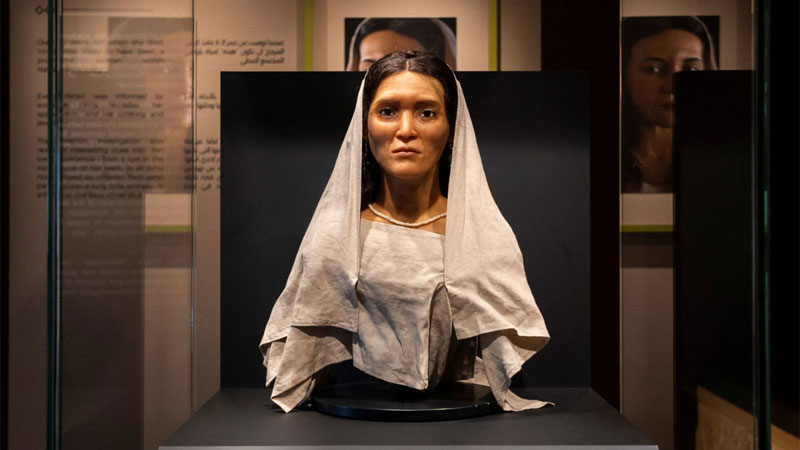|
The Hegra Welcome Centre in AlUla, Saudi Arabia, has unveiled a new exhibit; the reconstructed face of Hinat, a woman who lived more than 2,000 years ago

Lauren Heath-Jones | Planet Attractions | 17 Feb 2023

 Hinat was discovered in a 2,000-year-old tomb in 2015 Credit: Reuters Hinat was discovered in a 2,000-year-old tomb in 2015 Credit: Reuters
The reconstructed face of a woman who lived more than 2,000 years ago has been unveiled in Saudi Arabia.
Housed in the Hegra Welcome Centre in AlUla, the reconstruction was based on the remains of ‘Hinat’, a Nabataean woman who was discovered in a 2,000-year-old tomb in nearby Hegra in 2015.
Hinat’s name was taken from an inscription on the tomb she was discovered in that read: “This is the tomb which Hinat daughter of Wahbu made for herself and her children.”
Funded by the Royal Commission of AlUla, Hinat’s reconstruction was carried out by a team of international experts in the UK in 2019.
The team first reassembled bone fragments found in the tomb, before using anthropological and archaeological data to create a digital reconstruction of her appearance. A sculptor then took the image to create a 3D-printed bust of Hinat, which is now on display.
Hinat was a member of the Nabataen tribe, an ancient civilization that lived in southern Levant and northern Arabia from the fourth century BCE until approximately 106 CE. The city of Petra in modern-day Jordan served as the kingdom’s capital and was the location of its thriving spice, incense, medicine and fabric trade.
“The Nabataens are a bit of a mystery: We know a lot, but at the same time we know very little because they didn’t leave any literary texts or records,” Laïla Nehmé, the archaeologist who led the project, told National Geographic.
“Excavating this tomb was a wonderful opportunity to learn more about their idea of the afterlife.”
Heritage
|
|






Supplier Showcase 2025: The biggest attractions projects landing worldwide this year
|